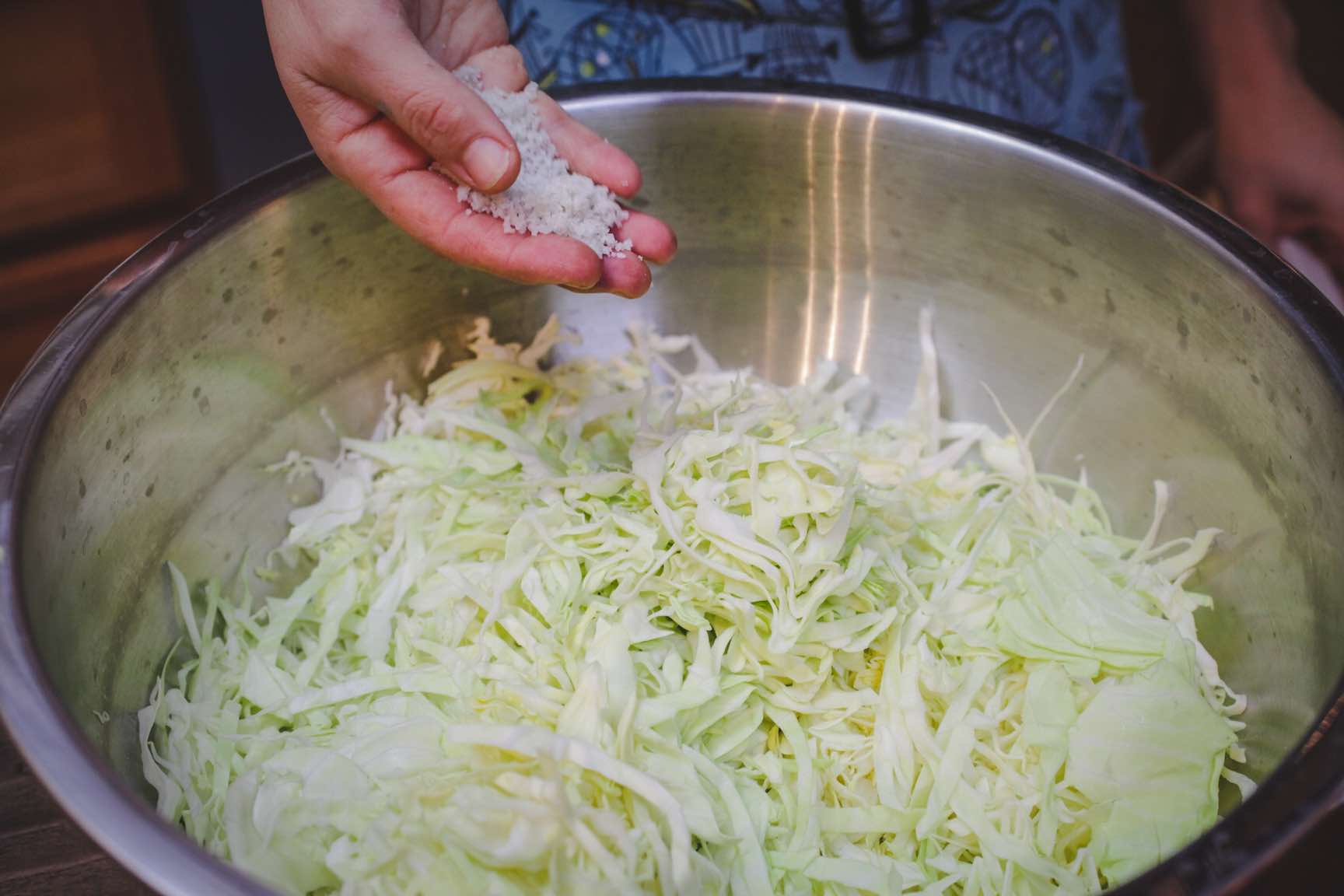- Continue Shopping
- Your Cart is Empty
Immunity-Boosting Winter Sauerkraut

What You'll Need
Ingredients
- 2 lbs green cabbage, finely shredded
- 2 tsp Celtic sea salt
- 1/2 cup shredded golden beet
- 1/2 cup thinly sliced fennel bulb + a few fronds chopped
- 2 tsp minced turmeric
- 1 tsp minced ginger
- 1 tsp minced garlic
- Zest & juice of 1 small orange
Equipment
- Jar-top fermentation kit or other fermentation vessel
- Our Must-Have Fermentation Supplies
This kraut is brilliant, golden yellow and packed with cheer and nutrition. It will help keep you at your best in a season of cold and colds. The lactobacilli bacteria that colonize the sauerkraut release bound-up nutritive factors in the cabbage—making twenty times more bioavailable Vitamin C than in raw cabbage. The golden beet adds color, vitamins and minerals. The turmeric, ginger, garlic and orange are all healthful additions that taste delicious too! Warming and stimulating, the perfect medicine for a gray winter day.
Yield: 1 quart
20 minutes prep + fermentation: 1–4 weeks
Directions
1. Shred the Cabbage, Add Salt and Massage


Place shredded cabbage into a large mixing bowl and add salt. With clean hands, firmly massage the salt into the cabbage until you are able to squeeze liquid out of the cabbage. This should take about 10 minutes.
Another option is to salt the cabbage, massage for 2-3 minutes then let rest for 20 minutes while prepping other ingredients. Room temperature cabbage will break down much faster than refrigerator-cold cabbage.
2. Add Remaining Ingredients


Add remaining ingredients to cabbage, then mix together well, massaging 1 more minute. Consider wearing gloves as the turmeric will stain.
3. Pack into Fermentation Vessel

Pack the mixture into a quart jar, using your fist, cocktail muddler, or a kraut pounder to push the cabbage down so all air bubbles are removed and packed enough so that the liquid rises above the top of the cabbage. Leave at least 1 inch of space between the top of the liquid and the mouth of the jar because the cabbage will expand as it ferments.
Use something to help keep everything down under the brine like a ceramic weight, small jar or cabbage leaf. You can also use one of our favorite jar-top fermentation kits, The Kraut Source.
If all the vegetables are not submerged: make supplementary brine by dissolving 1 tsp sea salt in 1 cup non-chlorinated water, then top off the kraut.
4. Ferment!
To ferment: use a jar-top fermenter according to manufacturer’s instructions, or close the lid of the jar lightly, being sure to not crank it down too tightly. Place jar in a bowl to collect possible overflowing brine.
Ferment at 64-74°F, not in the sun.
5. Check on Your Kraut
Check on your sauerkraut every day or two in the beginning. Ideally brine should always cover the vegetables. If it overflows, open it, pack kraut down again and pour brine back in or add supplementary brine. Jars without airlocks will need to be “burped “several times daily, to remove pressure. After a few days, the kraut should get bubbly. Ferment at least 5 days, and as much as 3 weeks.
6. Refrigerate and Enjoy!
Once the kraut is fermented to your desired taste and texture, screw on a lid and put it in the refrigerator. For maximum digestive and nutritive benefits, allow your kraut to ferment for 21 days and eat it raw, in small servings of 1/4-1/2 cup.
Kraut will keep in the fridge for up to 6 months, but it never lasts that long!
Over to You
It’s part of our mission here at Mountain Feed to help you make delicious, sustainable, homemade food more often. Stop by and say hello on Facebook, Twitter, Instagram or Pinterest. Or, as always, you can do it the old fashioned way and come by the store to speak with one of our in-house experts.
